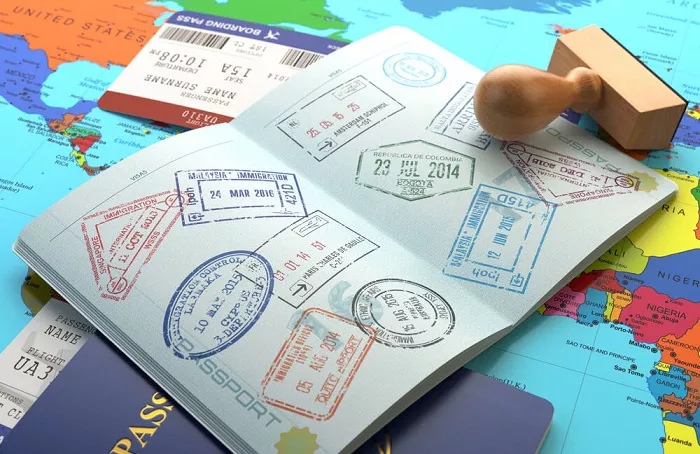The United States is one of the top destinations for international students, offering world-renowned educational institutions, diverse cultural experiences, and unmatched academic resources. Every year, hundreds of thousands of students from across the globe apply to study in the U.S., and one of the critical steps in this journey is securing a student visa. This process, while thorough and sometimes daunting, is a necessary gateway to the vast opportunities that American education has to offer.
Understanding the U.S. Student Visa System
The U.S. offers different types of visas for students, primarily the F-1 and M-1 visas. The F-1 visa is the most common and is intended for students pursuing academic studies at accredited institutions such as universities, colleges, and high schools. The M-1 visa, on the other hand, is for those enrolled in vocational or technical programs. Understanding the distinctions between these student visa types is essential before initiating your application.
Step-by-Step Guide to U.S. Student Visa Application Process
1. Secure Admission to a SEVP-Approved School
The first step is gaining admission to a Student and Exchange Visitor Program (SEVP)-approved institution. After acceptance, you will receive Form I-20 (Certificate of Eligibility for Nonimmigrant Student Status), which is necessary for the visa application process.
2. Pay the SEVIS I-901 Fee
Once you have your Form I-20, you must pay the SEVIS I-901 fee. This fee is mandatory and supports the maintenance of your records in the Student and Exchange Visitor Information System (SEVIS). Keep your receipt as you will need it for your visa interview.
3. Complete the DS-160 Visa Application Form
The DS-160 form is the Online Nonimmigrant Visa Application. You must fill out this form accurately and completely, as it serves as your official visa application. Once completed, print the confirmation page with the barcode for your interview appointment.
4. Schedule a Visa Interview
After submitting the DS-160, schedule an appointment for a visa interview at a U.S. embassy or consulate in your home country. Visa wait times can vary significantly, so it is advisable to schedule your interview as early as possible.
5. Prepare Required Documents
Before your interview, gather the following essential documents:
- A valid passport
- Form DS-160 confirmation page
- Form I-20 from your school
- SEVIS I-901 fee payment receipt
- Visa application fee payment receipt
- Passport-size photographs that meet U.S. requirements
- Financial evidence showing sufficient funds to cover tuition and living expenses
6. Attend the Visa Interview
The visa interview is a critical component of the application process. A consular officer will assess your intentions, academic goals, and financial stability. Be honest, clear, and concise with your answers. If approved, your visa will be processed and returned to you via courier or pickup service.
Key Considerations During the Application Process
Demonstrate Strong Ties to Your Home Country
One of the visa officer’s main concerns is whether you intend to return to your home country after your studies. You should be prepared to show evidence of strong familial, economic, or professional ties to your home country.
Be Financially Prepared
You must demonstrate that you have adequate funds to support your education and living expenses in the U.S. This may include bank statements, sponsor letters, scholarship awards, or loan documentation.
Be Honest and Accurate
Always provide truthful and consistent information throughout your application and interview. Any inconsistencies or falsehoods may result in visa denial and affect future travel to the U.S.
Timeline and Processing
The timing for obtaining a student visa varies depending on the country and the time of year. Ideally, begin your student visa application process at least three to five months before your program start date. After the interview, processing times typically range from a few days to several weeks.
After Receiving Your Visa
Check Visa Details
Carefully review your visa once you receive it to ensure all information is correct, including your name, school, and SEVIS number.
Prepare for U.S. Entry
You are allowed to enter the U.S. up to 30 days before the start date listed on your Form I-20. Make travel arrangements accordingly and keep all visa-related documents handy during travel.
At the Port of Entry
When you arrive in the U.S., present your passport, visa, and Form I-20 to the Customs and Border Protection (CBP) officer. You may also be asked questions about your program and finances.
Maintaining Your Visa Status
Stay Enrolled and Full-Time
F-1 visa holders must maintain full-time enrollment and good academic standing. Failing to do so can result in termination of your visa status.
Report Changes to Your DSO
Inform your Designated School Official (DSO) of any changes in your address, academic program, or financial situation.
Comply with Work Restrictions
Students on F-1 visas are generally limited to on-campus employment during their first year. Off-campus work is allowed only with proper authorization, such as Optional Practical Training (OPT) or Curricular Practical Training (CPT).
Extending or Changing Your Visa
If you need more time to complete your studies, consult your DSO about extending your Form I-20. If you wish to change your visa type (e.g., from F-1 to H-1B for work), you must apply through U.S. Citizenship and Immigration Services (USCIS) before your current visa expires.
Conclusion
Applying for a student visa to study in the U.S. is a detailed but manageable process when approached with preparation and attention to detail. From selecting the right institution to preparing for your visa interview, each step brings you closer to fulfilling your academic ambitions in the United States. By understanding the requirements, staying informed, and following the correct procedures, you can navigate the student visa journey with confidence and ease.


